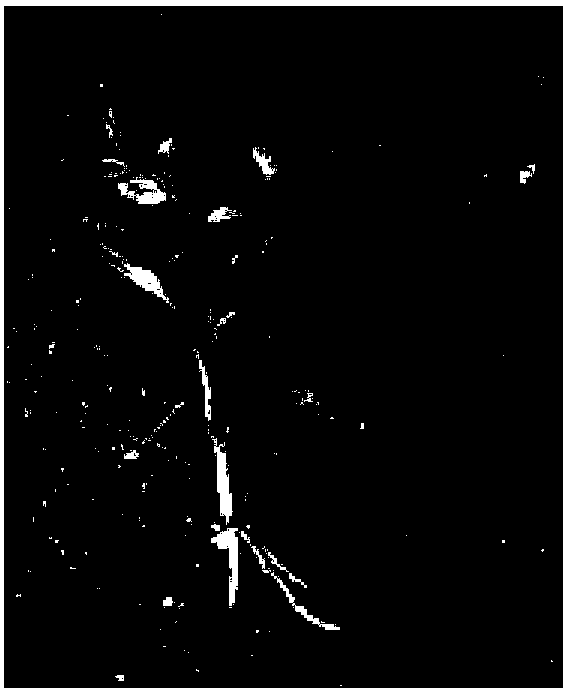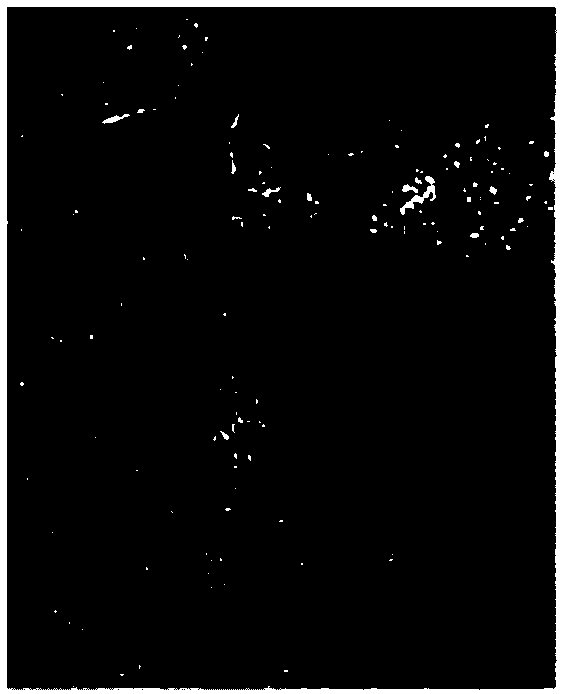Unorganized layering propagation method of wild roses
A layering and rose technology, applied in the field of garden seedlings, can solve the problems of increased seedling cost, seedling failure survival rate, long seedling time, etc., achieve high survival rate and preservation rate, increase seedling production opportunities, and improve utilization rate.
- Summary
- Abstract
- Description
- Claims
- Application Information
AI Technical Summary
Problems solved by technology
Method used
Image
Examples
Embodiment 1
[0037] (1) Layering time and selection of branches: On February 28, the wild rose branches from the previous year (some of the side buds have sprouted and sprouted) were taken from the fence of the north campus of Jiangsu Agriculture and Forestry Vocational and Technical College. The diameter of the branches is required to be 0.4cm-0.5cm thick . Curved branches can be cut at the bend, and straight branches can be cut to a length of 30cm-50cm. There are 4-8 side buds or more on each branch. The side buds can be germinated or not. Cut off in the middle of the node, and the cut is away from the port. The side buds are above 2cm.
[0038] (2) Seedbed and substrate requirements: The seedbed used for layering should be cuttage seedbed, the substrate should be vermiculite + perlite (volume ratio 1:1), and the thickness of the substrate should be 25cm.
[0039] (3) Layering operation: use a pick to open a ditch on the substrate, the ditch depth is 4cm, and the ditch width is 10cm. B...
Embodiment 2
[0043] (1) Layering time and selection of branches: On February 28, the previous year's wild rose branches (some of the side buds had sprouted and sprouted) were taken from the fence of the north campus of Jiangsu Agriculture and Forestry Vocational and Technical College. Branches are 0.4cm-0.5cm thick. Curved branches can be cut at the bend, and straight branches can be cut to a length of 30cm-50cm. There are 4-8 side buds or more side buds on each branch. The side buds can be germinated or not. 2cm above the bud on the side of the port.
[0044] (2) Seedbed and substrate requirements: Seedbeds for layering use cutting seedbeds. Clean river sand is used as the substrate, and the thickness of the substrate is about 25cm.
[0045] (3) Layering operation: use a pick to open a ditch on the substrate, the ditch depth is 5cm, and the ditch width is 5cm. Bury the flat ditch, let the sprouts and leaves above the ground surface be exposed to the ground when filling, then gently pre...
PUM
| Property | Measurement | Unit |
|---|---|---|
| Diameter | aaaaa | aaaaa |
| Thickness | aaaaa | aaaaa |
| Thickness | aaaaa | aaaaa |
Abstract
Description
Claims
Application Information
 Login to View More
Login to View More - R&D
- Intellectual Property
- Life Sciences
- Materials
- Tech Scout
- Unparalleled Data Quality
- Higher Quality Content
- 60% Fewer Hallucinations
Browse by: Latest US Patents, China's latest patents, Technical Efficacy Thesaurus, Application Domain, Technology Topic, Popular Technical Reports.
© 2025 PatSnap. All rights reserved.Legal|Privacy policy|Modern Slavery Act Transparency Statement|Sitemap|About US| Contact US: help@patsnap.com



